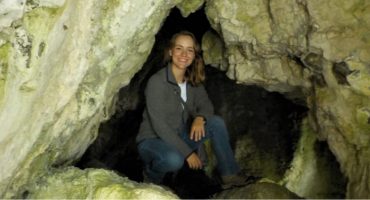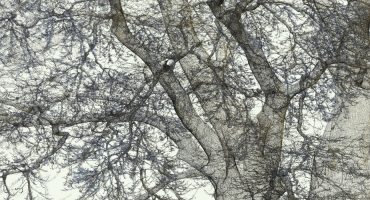I just love 3D! I am a citizen of São Paulo, the largest city in Brazil, and work as a neurological surgeon at a large public hospital, where I manage to be the chief-neurosurgeon and college teacher for academics and residents. I am also the CEO of a 3D printing company called MAGMA, where we manage 3D projects from modeling all the way to the final product.
My interest in 3D began long ago at the age of 7 back in the 80s. I was very fond of a movie called Weird Science (1985) in which some guys had a computer with lots of 3D models and built a human out of it. I was also fond of an album from Kraftwerk called Electric Café (1986) and its cover had 3D models of the group members’ heads. Those were times when we did not have easy access to 3D applications and I really dreamed about having a way to edit 3D models on my 486 PC, especially after I have played some 3D games like Stunts (1990), Hard Drivin’ (1990), and F1 World Circuit (1991).
Luckily, I had been able to acquire a copy of 3D Studio R4 back in 1996 and that’s when my 3D legacy began. The interface, functionalities, and options were awesome for those years, but the rendering engine was not the best, so I started creating models in 3D Studio and rendering them in a command-line DOS program called POV-Ray, which featured advanced ray-tracing and nice shadows and reflections.
3D meets science
Later on, I began working with 3D Studio MAX for Windows while I was a student in medical school, developing some human brainstem anatomy models, one of which earned me a scientific prize.
Time passed a bit more and I familiarized myself with some other 3D softwares like Maya and Cinema 4D. Everything changed when I got knowledge of Osirix! This fantastic tool got my attention because of its beautiful, clear, and smooth 3D reconstructions of DICOM medical imaging (CT and MRI), its ability to easily export to 3D formats like OBJ, STL, and VRML, and wonderful stereoscopic visualization.
I could finally start something big, so in 2010 I began using these reconstructions in my daily practice. First to understand a little better the anatomy of brain aneurysms before surgery and then to teach residents and medical students.
Well, it turns out that few people have 3D viewers and even fewer people can handle them. That’s where Sketchfab came in handy for me. First of all, I could share my aneurysm models with just a link, and it became very easy to send them to residents and students. Now nobody needed special software installed and everyone could see the 3D model in their own smartphones. Second, the rendering is just amazing, with so many options. I can create anatomic high fidelity 3D models and get them functional and beautiful. I can even print them in a 3D printer and have the physical model during the surgeries. The model below is a great example.
Workflow: From CT to Sketchfab
Well, if you want to have good results, you will need good source images. That might not be as easy as it seems if you don’t have a good CT machine and a good technician operating it.
As a general rule: the thinner the slices, the better the 3D result. So, if you plan on dealing with bones and skull reconstruction, a simple and slow CT might work for you even with few channels, but if you want good vascular recons, you will need a fast CT with more channels available, so you can have nice distinct arterial and venous phases. CT subtraction software is also desirable but not imperative.
Fortunately, our radiology department has 2 brand new Canon Aquilion Lightnings, one featuring 16 channels and the other one 80!
So, once you have access to the DICOM files (the source data files from the CT) you’re halfway to putting them on Sketchfab. You will need only software that can handle DICOM and turn it into STL files. The best choice for me is Osirix (macOS only, sorry), but there are plenty of other softwares capable of that, some paid, some free.
Once in Osirix, you should import your DICOM files and open the desired series (remember this: more slices = more detail). Then you choose the 3D surface rendering tool. A pop-up will open and ask for some parameters, the most important is the PIXEL VALUE, which will determine where the surface will form. For angioCT, the optimal pixel value is usually between 70 and 120, but may differ according to the volume of contrast and timing of the scan.
After that, a model will appear and, if it does not look ok, you can change the pixel value and other fancy 3D parameters to increase or decrease the polycount of your model.
You will realize that some noise will be present in the model, and to “clean” it, you will need another software after you export your STL file (there is an export button in the toolbar for that).
I usually clean my models using ZBrush, but any other 3D software that imports STL (or VRML, OBJ, IV, and RIB) might do the job well.
Doing it in ZBrush is pretty straightforward. All you have to do is import the STL, select AUTO GROUPS at the POLYGROUPS menu, then select and delete the undesirable polys.
You can also cut parts of the bone, thereby performing a virtual craniotomy to test a surgical approach like in the model below.
Export your STL and voilà! You are ready to upload it to Sketchfab. The images below show some models after post-processing in ZBrush.
But you can go further and import your STL to Simplify3D, create a .gcode file, and 3d print your model in any G-code compatible printer, as you can see in the images below.
Application
As you might have thought already, there are hundreds of different applications to what I have described. Building real anatomic models, studying anatomical variations, teaching normal anatomy and pathologic anatomy, planning all kinds of surgeries, etc.
The options are countless and there seem to be no boundaries to what we can achieve using CT/3D recon integration. Some tools might also play game-changing roles like softwares that can isolate a full organ automatically or simply let you select some and delete others with just a click, not having to spend hours editing the model after it is reconstructed from the DICOM source, but this is a subject for another spotlight. Oh, and I forgot the best part: you can add music to your Sketchfab model! Check these below:
If you need some help…
If you have any kind of doubt, trouble making it all work, or simply need someone who would do that for you, feel free to contact me.







